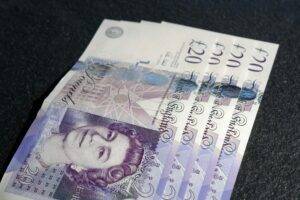Various events and changes in the UK and the EU have affected the trading dynamics between the euro (EUR) and the British pound sterling (GBP).
Political developments, Brexit and its impact, economic outlook, and market sentiment significantly influence the exchange rate between the two currencies. Recently, improved political outlooks in the UK have led to potential upside movements in the sterling against the euro. However, there has been a muted or fluctuating pound/euro exchange rate because of mixed economic data. Changes in interest rates and bond yields between the UK and EU also affect the attractiveness of each currency for forex traders. Let’s look at the trading dynamics between the euro and sterling.
Political Landscape in UK and EU and Its Impact on Forex Trading
Politics influences the forex market, as factors like political stability, fiscal discipline, and friendly diplomatic relations are indicators of economic growth that can strengthen the value of a currency. As of the writing of this article, one pound sterling equals 1.17 euro, but it can change at any time when trading forex.
During forex trading, EUR/GBP is a relatively stable currency. The price action for this pair is often smooth and more predictable because of their connectivity. It is also prevalent in global financial markets and a profitable option for traders. It is also one of the most traded currency pairs, aside from EUR/USD and USD/JPY.
The political climate in these two regions plays an essential role in shaping their currency value. For instance, the British referendum in the UK significantly impacted the British pound. During Brexit, a period of volatility and uncertainty in the forex market caused the GBP to weaken against the EUR.
Similarly, there are some political developments in the EU that influence forex trading. When the European Central Bank (ECB) changes interest rates or monetary policies, it affects the euro’s value. Political events like elections, economic policies, and trade agreements within an EU state can fluctuate the EUR/GBP currency pair.
The strength of the pound sterling is due to the long history of political and economic stability in the UK. As for the euro, it is strong because of its global presence in international trade and its use as a reserve currency. The euro is the second most traded currency in the forex market, while the British pound is the fourth.
Brexit and Its Ongoing Effects
Since the United Kingdom voted to leave the European Union, the British pound (GBP) weakened against the euro (EUR). Before Brexit, the pound to euro exchange rate was slightly over 1.40. However, the pound has weakened since Brexit and one GBP now equals 1.17 euros. The pound has also weakened against the US dollar since the referendum.
Although the GBP is still lower than its recent highs, it has recovered and remained strong over the major currencies like the euro and the dollar. As of January 2024, the UK economy has dramatically recovered, and this is expected to help the GBP stabilise from the recent slide against the euro caused by Brexit.
But it’s still unclear whether the UK economy will keep up with the rest of Europe in 2024. As interest rates in the UK fall and real household incomes recover, the UK economy is expected to pick up in 2024. As for the EU, economic growth is anticipated to be 0.9% in 2024, down from the 1.3% previously predicted.
How To Navigate Euro-Sterling Trades
While the euro-sterling trades have become more stable, forex traders need to learn how to navigate these trades in the forex market.
For one, you should stay informed and monitor the economic indicators, latest news, and political developments related to the euro and British pound. This would help anticipate potential shifts in currency values.
Also, monitor any developments related to Brexit, like negotiations between the EU and UK, as they are ongoing. Check if any trade agreements or political decisions will affect the relations between the UK and EU.
Technical analysis is an essential aspect of forex trading. Use technical analysis tools and indicators to identify trends and patterns in the EUR/GBP pair. This will help you set stop-loss orders, point out entry and exit points, and manage risk appropriately.
Put proper risk management tools in place when trading in this currency pair. You can set position sizes and stop-loss orders for adequate use. Stop-loss orders are fundamental because they help you automatically exit trades if the market moves against you. That also enables you to protect your trading capital.
When trading the EUR/GBP forex pair, you should keep correlations in mind. Similar political and economic factors influence the euro and sterling in the eurozone and the UK. Understanding these can help you better understand their movement.
Outlook and Future Trends for Forex Traders
The euro-sterling pair is expected to trade at a higher rate than the current one by the fourth quarter of 2024. It is also predicted that the pound will strengthen against the euro by the end of 2024. However, it’s important to note that different factors can change the move of currencies. When considering the future trends of the euro-sterling forex pair, note that the Brexit negotiations and economic indicators in the eurozone can influence the performance. Remember to follow financial news, understand the base and quote currency, trade at the correct hours, and remember that this pair has low volatility.
Photo by Colin Watts on Unsplash
Read more:
Euro vs Sterling: Trading Dynamics & UK-EU Economic Changes















